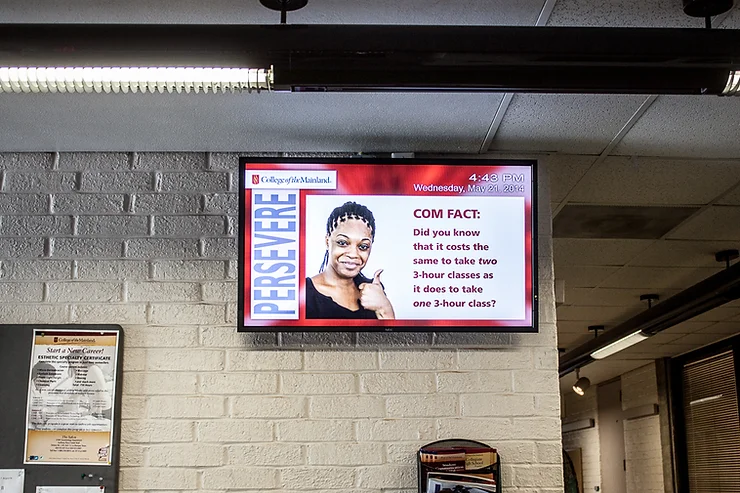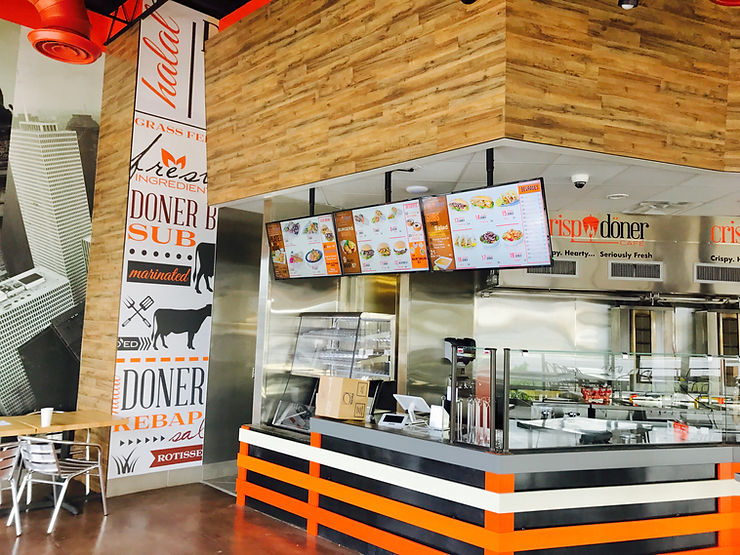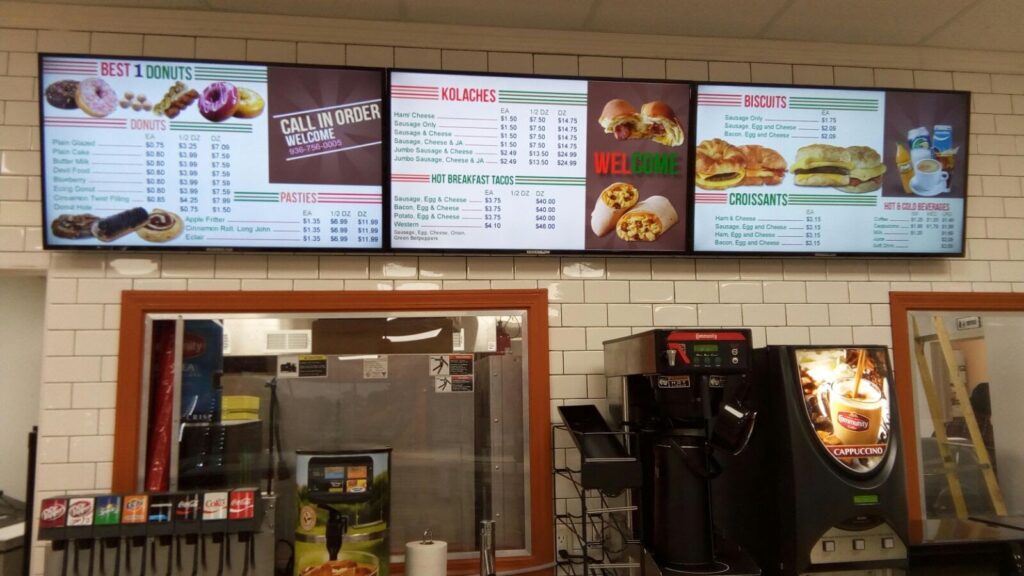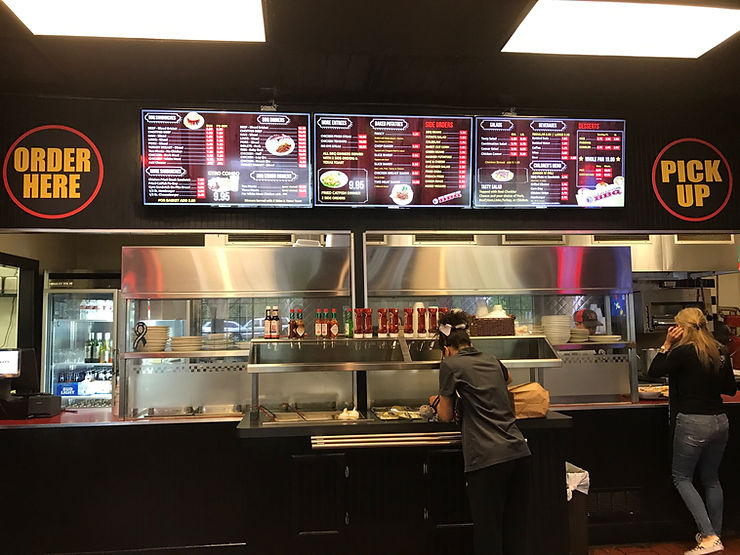Welcome to Part 2 of our blog series designed to help you make all the right choices when it comes to your digital signage!
Now that you’re ready to show off the display of your dreams, you’re probably anxious to get some messages up and running. Don’t rush yourself into bad content selection, though. Many people remain under the misconception that the displays themselves are what sells, but this isn’t the case. Yes, the displays draw attention – much more attention than traditional static menu boards – but content and design must be current, catchy, useful and attractive if you want to want to not only draw attention but keep it as well.
The goal is to have your digital signage work for you. It should be selling your product for you even while you’re away. It should constantly advertise your brand. It should be increasing the efficiency and productivity of your staff. It should be programmed to change according to your business needs ahead of time, putting your mind at ease and leaving you free to tend to other matters. Most importantly, it should be doing all of this (and more) so well that you feel inclined to add it to your payroll!
Every digital menu board has the potential to deliver the desired results, but it’s up to you as your own creative director to follow the steps that will lead you to a great content library.

Stay Relevant. The ubiquity of social media is undeniable, so when you’re updating your digital signage content be sure to include a way for viewers to be inclined to engage via Facebook, Twitter, Instagram, etc. Keeping up with the viewers’ favorite social media outlets will deem you relevant and show your willingness to keep up with your public. Another way to stay relevant is simply by keeping track of the time. Literally. Make sure messages you broadcast in the morning can relate to early viewers. For instance, showing morning traffic, weather updates, and breakfast options (if available) make sense for 6am-10am, but content needs to change as the day progresses.
Be Unforgettable. Not just through the idea behind the words, but through the words themselves. You can make your advertising fun and memorable by playing with stylistic literary devices. Use alliteration (e.g. Sally sells seashells on the seashore) to make it fun to read. How about a tongue twister. Remember how Peter Piper picked a peck of pickled peppers? Of course you do! You can’t forget it! Repetitive first letters are appealing. Even simple ones like World Wide Web do the job. You just have to create your own. Rhyming is also great. Studies show it helps people remember things. Additionally, you can use subtle imagery to reinforce ideas.
Eliminate Clutter. Displays should not be overwhelming. Each screen, whether on rotation or not, needs to have a concise message. There should be one main focus; all other aspects of the content on that display should be complementary. A call to action, for instance, would be perfect. However, you do not want to advertise a new product, ask people to sign up for a rewards card, and bombard viewers with flashy images all at the same time. Keep your messages meaningful, and remember: less is more. No one wants to look at a digital mess!
Take Advantage of Your Software. Not every software allows for automatic day-parting and other scheduling ahead of time, but it’s definitely available through the HD2Menus software subscription. While the HD2 sales team makes it a priority to explain the benefits of its software, not all companies do. This means you need to step up and ASK, ASK, ASK. Voice your concerns about the software discuss anything and everything on your mind. Have your rep explain the very best aspects of the software; have them show you how it works so you know what you’re getting yourself into.
Be Engaging. Ask a rhetorical question. “Had lunch yet? Try our tomato bisque!” Or “How ready are you for retirement? Talk to a banker today.” Force people to think about your product or service in relation to their lives. I’ve discussed the importance of calls to action in a past blog post. I repeat it here now because it’s crucial. Invite viewers to do something – to “go to this link”; to “like our Facebook page”; to “join the conversation”; to “try our shawarma”. Notice how they all began with a verb? Try it!




